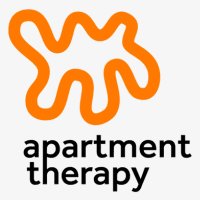Welcoming a newborn into your life is a joyous and transformative experience. As a new parent, you might be wondering how to engage with your 1-month-old baby to support their early development.
While they may seem fragile and sleepy, this is a crucial time for laying the foundation for cognitive, physical, and emotional growth. This comprehensive guide will provide you with safe and effective activities to stimulate your baby’s early development, helping you build a strong bond while nurturing their budding abilities.
Table of Contents
Understanding Your 1-Month-Old Baby
Before diving into specific activities, it’s essential to understand the developmental milestones typical for a 1-month-old baby. This knowledge will help you set realistic expectations and tailor activities to suit your baby’s needs.
Physical Development

At one month old, babies are starting to gain control over their bodies. They may:
- Lift their head briefly when placed on their tummy.
- Move their arms and legs more smoothly, though movements are still mostly reflexive.
- Focus on objects about 8-12 inches away, which is typically the distance to your face during feeding.
Cognitive Development
Cognitively, a 1-month-old is:
- Beginning to recognize familiar faces and voices.
- Exploring through their senses, primarily touch and sight.
- Responding to sounds by turning their head or eyes toward the source.
Sensory Development
Sensory experiences are vital at this stage:
- Vision: They can see high-contrast patterns and prefer human faces.
- Hearing: They are soothed by familiar voices and may startle at loud noises.
- Touch: Skin-to-skin contact is comforting and promotes bonding.
The Importance of Early Stimulation
Engaging in appropriate activities with your baby supports their overall development and strengthens your relationship.
Benefits of Early Activities
- Promotes Brain Development: Stimulating activities encourage neural connections in the brain.
- Enhances Motor Skills: Simple movements help develop muscle strength and coordination.
- Supports Emotional Growth: Positive interactions build trust and security.
Building Bonds with Your Baby
- Attachment: Regular engagement fosters a secure attachment, essential for emotional well-being.
- Communication: Even at this young age, babies begin to understand the basics of communication through your tone and expressions.
Safe and Effective Activities for 1-Month-Olds
Now that you understand your baby’s developmental stage, let’s explore activities that are both enjoyable and beneficial.
Tummy Time
What It Is: Placing your baby on their stomach while they’re awake and supervised.
Benefits:
- Strengthens neck and shoulder muscles.
- Prevents flat spots on the back of the head.
How to Do It:
- Lay a soft blanket on the floor.
- Place your baby on their tummy.
- Start with short sessions (1-2 minutes) several times a day.
- Gradually increase the duration as they get stronger.
Tips:
- Always supervise to ensure safety.
- Get down on the floor with them to maintain eye contact.
Visual Stimulation
What It Is: Engaging your baby’s sight with high-contrast images and colors.
Benefits:
- Enhances visual tracking skills.
- Stimulates cognitive development.
How to Do It:
- Show black and white images or toys with bold patterns.
- Move objects slowly side to side to encourage eye movement.
- Use a mobile with high-contrast shapes above their crib.
Tips:
- Keep objects within 8-12 inches from their face.
- Change the images regularly to maintain interest.
Auditory Stimulation
What It Is: Introducing your baby to different sounds and tones.
Benefits:
- Develops listening skills.
- Encourages auditory recognition.
How to Do It:
- Speak to your baby in a calm, soothing voice.
- Play soft music or lullabies.
- Use rattles or bells gently.
Tips:
- Observe their reactions to different sounds.
- Avoid loud or sudden noises that may startle them.
Gentle Touch and Massage
What It Is: Lightly massaging your baby’s body.
Benefits:
- Promotes circulation and muscle relaxation.
- Enhances emotional bonding.
How to Do It:
- Choose a warm, quiet space.
- Use baby-safe oil or lotion.
- Gently massage their legs, arms, and back.
- Maintain eye contact and talk softly.
Tips:
- Be gentle and watch for cues that they are comfortable.
- Avoid massaging right after feeding.
Talking and Singing
What It Is: Communicating with your baby through speech and song.
Benefits:
- Introduces language patterns.
- Strengthens auditory and cognitive skills.
How to Do It:
- Narrate your activities (“Now we’re changing your diaper”).
- Sing nursery rhymes or lullabies.
- Use varying tones and pitches.
Tips:
- Pause to allow them to “respond” with coos or facial expressions.
- Repetition helps them recognize familiar sounds.
Facial Expressions and Mimicking
What It Is: Using your face to engage and interact.
Benefits:
- Teaches emotional cues.
- Encourages social development.
How to Do It:
- Hold your baby close and make exaggerated expressions.
- Stick out your tongue or smile widely.
- Wait to see if they attempt to mimic you.
Tips:
- Be expressive but not overwhelming.
- Positive expressions help them feel secure.
Creating a Stimulating Environment
The environment plays a crucial role in your baby’s development.
Appropriate Toys and Materials
What to Consider:
- Safety: Toys should be non-toxic and free of small parts.
- Simplicity: Simple toys are often more engaging at this age.
- Variety: Offer different textures and shapes.
Suggestions:
- Soft rattles.
- High-contrast books.
- Unbreakable mirrors.
Setting Up the Nursery
Tips:
- Calming Colors: Use soft colors for walls but add high-contrast decorations.
- Temperature Control: Keep the room comfortably warm.
- Lighting: Use adjustable lighting to create a soothing atmosphere.
Tips for Engaging with Your 1-Month-Old
Follow Baby’s Cues
- Watch for Signs: If they turn away or become fussy, they may need a break.
- Be Responsive: Adjust activities based on their reactions.
Keep Sessions Short
- Attention Span: Newborns have limited attention spans.
- Frequency Over Duration: Short, frequent interactions are more effective.
Be Patient and Consistent
- Routine: Establishing a routine provides security.
- Progress: Development is gradual; celebrate small milestones.
Common Concerns and FAQs
Is My Baby Developing Normally?
What to Expect:
- Variations Are Normal: Every baby develops at their own pace.
- Milestone Checklists: Use them as guidelines, not strict timelines.
When to Be Concerned:
- Lack of response to loud noises.
- Difficulty focusing their eyes.
When to Consult a Pediatrician
Signs to Watch For:
- Feeding Issues: Poor feeding or lack of weight gain.
- Unusual Lethargy: Excessive sleepiness or low activity.
- Muscle Tone: Very stiff or floppy limbs.
Action Steps:
- Document Observations: Keep a log of concerns.
- Schedule Appointments: Don’t hesitate to consult your pediatrician.
Conclusion
Engaging in stimulating activities with your 1-month-old baby is a rewarding way to support their early development. By understanding their developmental stage and following their cues, you can create meaningful interactions that foster growth and strengthen your bond.
Remember, patience and consistency are key, and every small effort contributes to their overall well-being.
Next Steps:
- Start incorporating these activities into your daily routine.
- Observe and enjoy the unique ways your baby responds and grows.
- Keep communication open with healthcare providers for ongoing support.
References:
- American Academy of Pediatrics. (2021). Caring for Your Baby and Young Child: Birth to Age 5.
- Centers for Disease Control and Prevention. (2021). Important Milestones: Your Baby at One Month.













